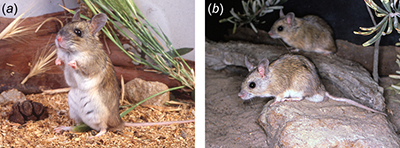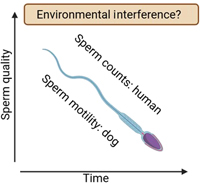Reproduction, Fertility and Development
Volume 37
Number 7 2025
We give a brief overview of sperm–egg interactions at the time of fertilisation in an Australian hydromyine rodent, the Plains Mouse Pseudomys australis emphasising the unique features of its spermatozoon: the presence of two ventral processes. These may be the most morphologically complex sperm to have evolved in eutherian mammals, and may have evolved in an early common ancestor of the hydromyine rodents several million years ago. These ventral processes may facilitate the binding of the spermatozoon to the zona pellucida of the ovulated egg to maximise the chances of fertilisation. Photographs by William Breed.
Textbooks, websites and YouTube videos present misinformation about the ovary with statements and illustrations that are patently inaccurate or incorrect. Even multiple edition textbooks still have major misleading inaccuracies occurring in text and illustrations. Amongst other inaccuracies many report that the prepubertal human ovary is dormant and that a human primordial follicle grows into preovulatory follicles during the course of the follicular phase of 14 days. How did we get here and more importantly how can it be rectified? Diagram byProfessor Jeffrey B. Kerr.
This article belongs to the collection: The biology of the ovary – Honouring the contributions of Ken P McNatty and Rex J Scaramuzzi.
A temporal decline in human sperm counts and dog sperm motility has been linked with environmental factors. This viewpoint article explores the basis of this contention and its implications for male fertility. Image by Richard G. Lea using Biorender.








